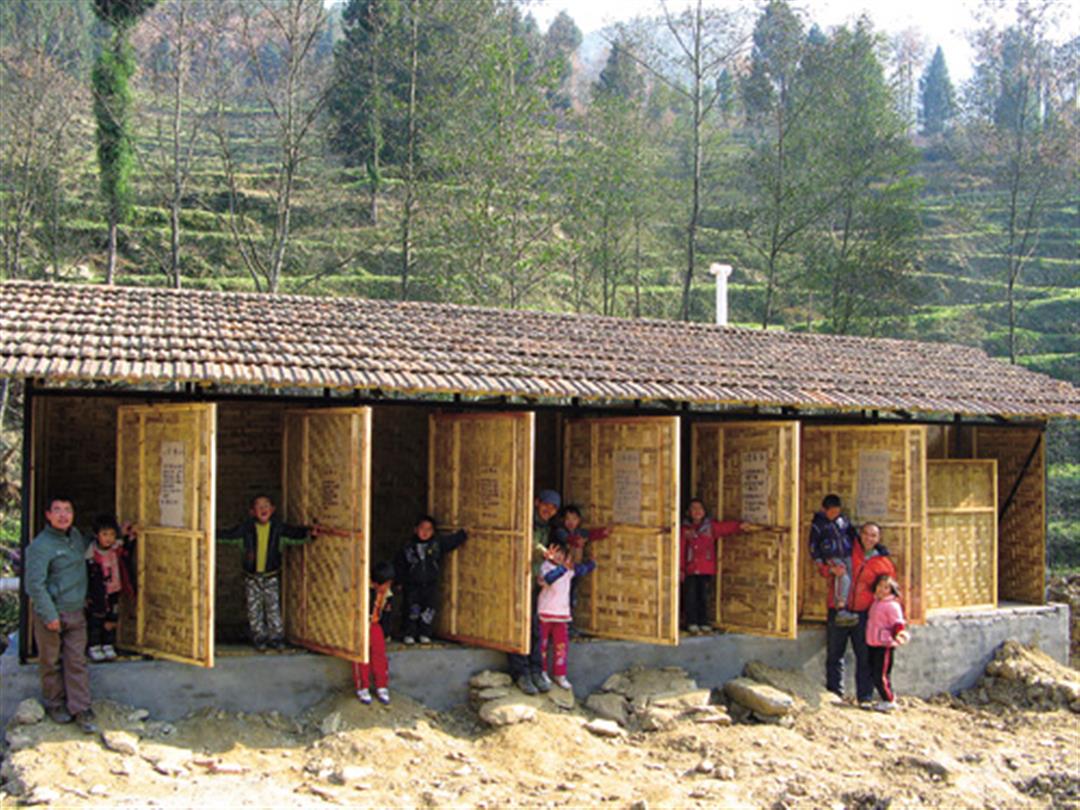Community spirit
The technology problem hadn't stopped him, but he ran into problems of a different kind that often forced him to tear down completed houses and rebuild them, or make modifications as he went along.
Hsieh was keenly aware that though he could speak Mandarin with the villagers, had developed design plans for them, and had even shown them scale models of his homes, a gulf still separated him from them. Perhaps it was cultural, or maybe the Thao weren't very good at expressing themselves, but a resident would always emerge from a home just as another was being completed in front of it and explain that he was a village elder in charge of a particular ceremony, that the community needed the space in front of his home to dance, and that the nearly completed home would have to be disassembled and rebuilt elsewhere.
"For them, living spaces were incidental," says Hsieh. "The important thing was building a sense of cultural belonging, reestablishing a communal consciousness." Hsieh says that the cultural reconstruction work was even more challenging than the housing reconstruction work. When he completed his work to the villagers' satisfaction six months later, they roasted whole pigs and sheep for a boisterous moving in ceremony. With their cultural confidence waxing again, they also decided to revive a sowing ceremony that hadn't been held in 14 years.
Having won the tribespeople's trust, Hsieh taught them how to use some basic tools and with them set to work rebuilding other homes in the reconstruction zone, work for which they earned accolades from the cultural community. But they ran into difficulties when their efforts disrupted "the market." Contractors and vested interests that wanted a share of the reconstruction pie soon went to work undermining their efforts.
When the 921 Earthquake Relief Foundation invited Hsieh to take part in meetings with locals on housing reconstruction efforts in the Xinyi Township villages of Dili, Shuanglong, and Tannan, he received a threatening call from someone warning him not to be "too uppity." Work groups were closely watched when simply surveying villages, not to mention when they were actually building homes. With vested interests obstructing their efforts, reconstruction progressed very slowly.
Tannan Village is just a 30-minute drive from Ita Thao, but sits at a higher elevation and in a more remote location. Reconstruction work in the village was still going almost nowhere when Typhoon Toraji battered central Taiwan in July 2001. The typhoon made matters even worse by dropping several days of rain onto leaky homes and destroying all the roads into the village. When a resident succeeded in contacting Hsieh privately to ask for his assistance, Hsieh and a few colleagues spent hours marching up the mountain to inspect the village. Once they came back down, they requested and received emergency aid for the village, which village youths then carried back up into the mountains.
Three months later, he sent out a work team of a dozen or so people from three different villages. They built the framework for a home on the highest ground in the community in just a few days to demonstrate what they could do. As resistance to their efforts faded, the team managed to establish itself in the village and begin work on more than 10 homes. Sadly, it took three years to reach that point.
In 2005, World Vision Taiwan underwrote the NT$30-million-plus cost of moving Tianhu, an Atayal village originally located in Hsinchu County's Wufeng Township. The funding provided Hsieh with a larger-than-usual budget-roughly NT$900,000 per home for construction costs and another NT$50,000 per home for design and oversight costs-and he used it to create a cluster of 36 pretty homes that look like little vacation villas sitting atop the narrow strip of buildable land available at the hilly site.
Over the last decade, Hsieh has built housing in rural Nantou's Xinyi and Renai Townships, in Taichung's Heping Township, and in Hsinchu's Wufeng Township. He's applied the same principles in constructing all of the 300-plus homes, large and small alike: simple construction methods, environmentally friendly materials, plain looks, and construction solidarity.

Hsieh's innovative ideas include waste separating toilets (facing page) for a water-starved Sichuan disaster zone, an "eco-home" in Hebei Province (lower left) made entire from locally available materials, and an elevated house to protect residents of Southeast Asia from the effects of tsunamis.